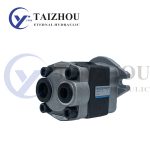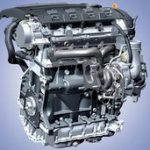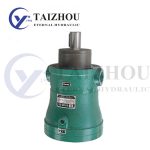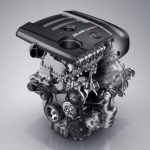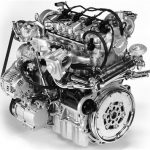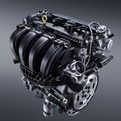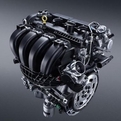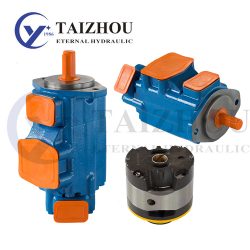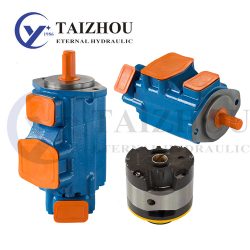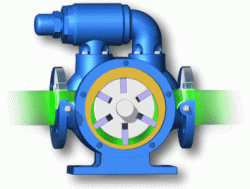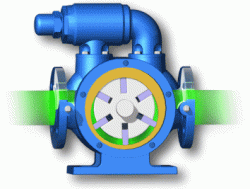China Vane Pump , Vane Pump: Several Performances Used Improperly
The blade pump’s product manual generally has detailed installation guidelines and precautions, but in actual use, it is often not taken seriously by people. Incorrect use will always lead to the failure of the vane pump. The statistical analysis of the boundary shows that the majority of all the faults in the vane pump are caused by improper use. The improper use of the oil pump is up to 95%. Therefore, we have the responsibility to promote the correct use of the vane pump to the majority of vane pump users. .
It is well known that the most prone to failure of components in a hydraulic system is the oil pump, and the failure ratio of the hydraulic valve and the cylinder is much lower than that of the oil pump. They can be solved by cleaning at most, and the vane pump is fatal if it fails. Therefore, whether the correct use of the vane pump is essential, in order to distinguish which type of problem belongs to, the correct use and the cause of the fault, the China Vane Pump provides the following experience for reference:
First, several manifestations of improper use:
1. Coupling installation error: Because the coupling between the coupling and the shaft is too small or no clearance, the bearing will be injured when striking hard, resulting in early damage of the bearing and affecting the life of the entire pump. Furthermore, if the coupling does not have a certain axial clearance during installation, the screw is directly rigidly mounted on the pump casing, which will force the bearing axially. If the axial force is applied for a long time, the bearing will be very It is damaged and eccentric, and the pump core is removed. On the surface, it seems that the pump core has failed. In fact, the bearing is the bearing.
(This is the first killer of oil pump damage)
2. Coaxiality is out of tolerance: If the coaxiality exceeds the specified value during installation, the bearing and the whole pump core will be eccentric and damaged early, and the shaft will be cut off (the shaft is cut at the thickest part of the shaft head), coaxiality Generally, the control is about ≤0.1 mm.
3. The oil is too dirty: because the fuel tank is not sealed, the surrounding dust and debris are mixed into the oil, so that the cleanliness of the oil exceeds the standard. If the filter is not accurate enough or there is no filter, the pump will be scratched quickly. Damage, especially the hydraulic tank of the new equipment, due to the presence of electric welding slag in the pipeline or the cleaning of the fuel tank will cause the pump to crash when the new pump is started.
(This is the second biggest killer of oil pump damage)
4. Deterioration of oil: Due to the use of expired hydraulic oil or reclaimed oil, the surface of the pump parts is black or viscose. The impurities, poisons and corrosiveness in the oil can cause early damage of the oil pump and regenerated expired oil. Due to the lack of lubrication and anti-wear properties, the life of the pump core is greatly shortened, and even the blades and the pump core are stuck and cannot move.
The service life of anti-wear hydraulic oil is 2000-3000 hours (for half a year) according to the introduction of the oil company. When the environment is good, the life can be extended to 6000 hours (about one year). Therefore, it is recommended that customers replace the new oil every year.
(This is the third biggest killer of oil pump damage)
5. The oil temperature is too high: due to the absence of a cooling device, the oil temperature will continue to rise during continuous use of the machine. If the oil temperature is as high as 70° or more for a long time, the life of the oil pump will be greatly shortened, and it will generally be damaged in half a year to one year.
6. Influent in oil: In a device with water cooling, the water will enter the oil due to the poor sealing of the “water cooling device”, the oil will appear milky (emulsified), and the metal parts inside the pump will rust or Partial rust, the pump will accelerate wear and shorten the life during high-speed rotation, and the shaft seal of the oil pump will also damage the pump shaft and cause oil leakage.
(This is the fourth biggest killer of oil pump damage)
7. Change the direction of the oil port: When the direction of the oil port is not suitable, if the customer does not have the experience to adjust it, the pump core is not inserted into the Xiaokong (caused when the rotation is pulled). At this time, the oil suction port space is reduced and the oil is sucked. The oil absorption is not smooth, and the performance is as follows: the noise is very large, the pressure swings, and the oil temperature rises too fast when used for a long time, and the life curve of the stator will be shortened after the curve is corrugated. In addition, when the rotation is cut, the sealing ring is trimmed or the screws are not tightly tightened, which may cause oil leakage.
8. Instant overpressure: There are many times when the oil pump has extreme accidents such as “collapse cover”, “front cover”, “broken shaft”, “broken blade” and “cracked stator”. It is also a quality problem of the oil pump, which can be carefully analyzed. It has other reasons, such as: the collapse of the double pump back cover, the collapse of the single pump front cover, the broken shaft, the broken blade, the broken stator, etc., this situation will not happen at the same time. When the internal pressure of the oil pump exceeds twice or twice the pressure that can be withstood, the weakest parts in the pump will be damaged first, and the damaged parts will instantly damage other parts when the power is not stopped until the broken shaft forces The power can’t continue to pass and stop. The damage of other parts is only affected by people. The source of the fault is overpressure. The instantaneous overpressure is the chief culprit of extreme accidents. The reason for the instantaneous overpressure is that the pressure relief valve is blocked. Can not be properly relieved.
In order to understand the pressure limit of the oil pump, we have done several destructive tests. Several double pump back covers were installed on the closed steel plate, and the pressure was gradually increased by the manual pump. When the pressure reached 45 MPa, the screw was pulled. Long, the nitrile seal is opened, and after replacing the fluorine seal and the screw, the back cover and the front cover are respectively cracked when the pressure reaches 50-55 MPa.
The above experiments can prove the following phenomena:
1. Qualified hydraulic castings can withstand an internal pressure of 50 MPa, and above 50-55 MPa is its pressure limit.
2. Four 12.9-stage locking screws can withstand the pulling force of 45-50 MPa.
3, the internal pressure of the oil pump is the system overpressure, not the human factor, but the oil road is plugged.
4. The sealing ring also needs a lot of pressure to open, and there may be internal overpressure or the screw is not locked or the locking is uneven.
5, the pressure limit of the oil pump 21-32 MPa, if there is a collapse phenomenon can be sure that it is overpressure, the responsibility is in the user.
(This is the fifth biggest killer of oil pump damage)
6, poor oil absorption: a common fault of the vane pump is that the “stator” inner surface wears into a slab-like rib, which is mainly caused by poor oil absorption. The reason is: when the oil pump is insufficiently sucked, the pressure will be high and low, and the effective contact of the top of the blade with the inner curved surface of the stator will intermittently disengage and contact with the change of pressure, and the frequent hard impact will make the oil absorption area of the stator. There was a plaque like a plaque.
There are several cases of poor oil absorption: the oil is too sticky (the grade is too large), the filter is clogged, the suction line is too thin, the oil level is too low (the oil quantity is not enough), etc., this fault occurs in the winter in the north because Cold oil can’t be sucked up.
7. Air leakage at the oil suction port: In the process of newly installed oil pump, the air leakage at the oil suction port is also a common disease. The performance is as follows: the noise is too large, the screaming, squeaking, the higher the pressure, the more obvious, the long time work The oil in the tank will foam. The main cause of air leakage is caused by poor sealing of the oil pump inlet flange and pipe seals.
https://www.xjetl.com



